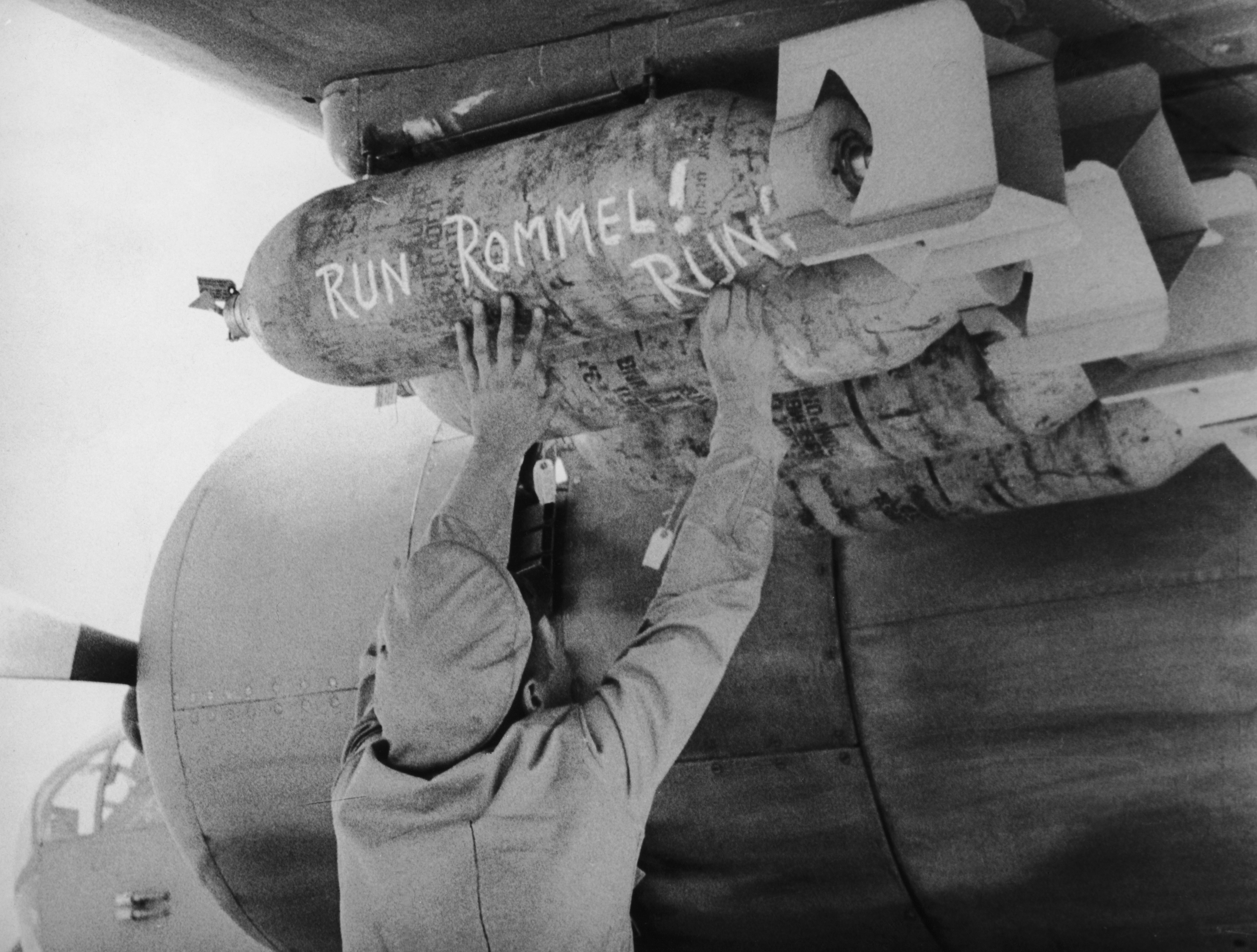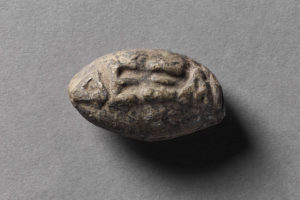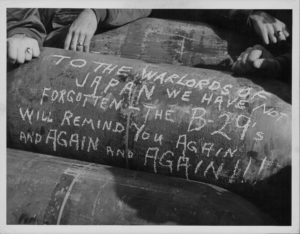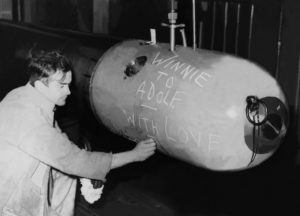Military humor transcends millennia, apparently. From phallic graffiti, courtesy of some bored Roman soldier, dating back to A.D. 207, to nose art, there is a long history of “self-expression” within the ranks.
Military “love notes” such as “To the warlords of Japan, we have not forgotten—the B-29s will remind you again and again and again!!!” to the more succinct, “Run Rommel! Run!” caught the public’s eye during World War II, but messages of bravado inscribed on bombs, missiles, and other munitions didn’t just begin in the 20th century. Allied soldiers during the Second World War were simply carrying on a proud tradition that harks back over 2,000 years to Ancient Greece.
A lead sling bullet, now housed at The British Museum, can be seen with the tongue-in-cheek inscription of DEXAI or “Catch!” in Greek.
Dark humor is the bedrock on which the military stands.
Historian John McCaul in On Inscribed Sling-Bullets, notes that slings and lead bullets were frequently employed during sieges with town names and deities also inscribed on the projectiles. However, the more ironic ones stand the test of time with zingers like the one found near the city of Argos, Greece with the inscription “Bite it in vain”—aka the ancient equivalent to the idiom “This is a hard nut to crack.”
Can you imagine ‘ol Aeneas chortling with his buddies as he placed his lead bullet with the message “Lucius Antonius, you bald-pate, you are undone,” into his slingshot?
According to McCaul there is no record that Antonius, the brother of Mark Antony, actually suffered from hair loss, but there’s nothing like some ancient male patterned baldness banter to really strike at the heart of man.
While such expressions may appear infantile bordering on the obscene, the impulse to personalize weapons of war taps into, according to an American pilot who served in Vietnam, “the very primitive magical notion that, once you have named something, you have control over it.”
So “Run Rommel! Run.”









